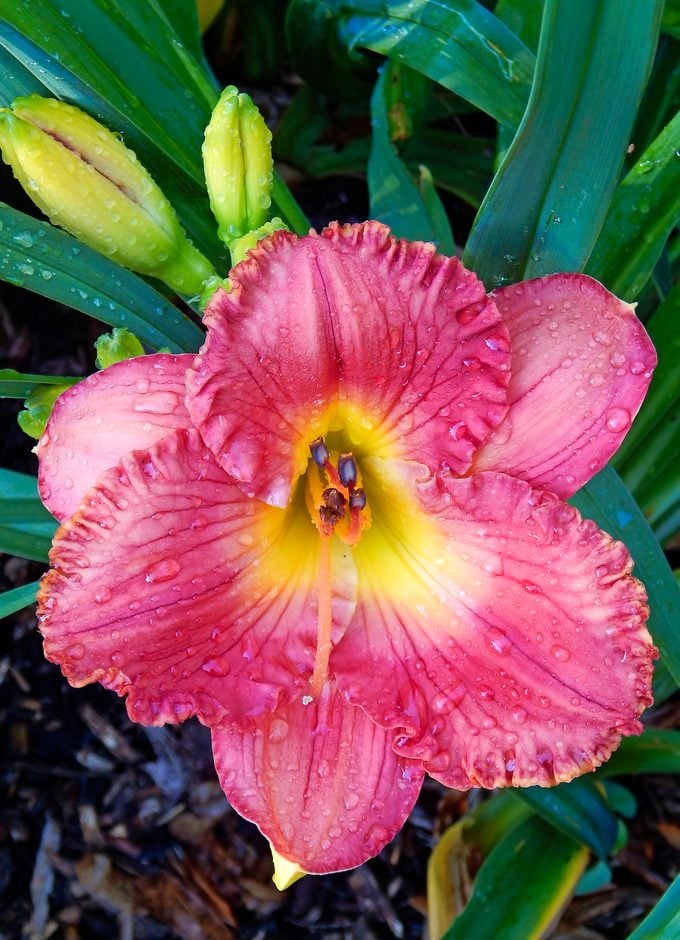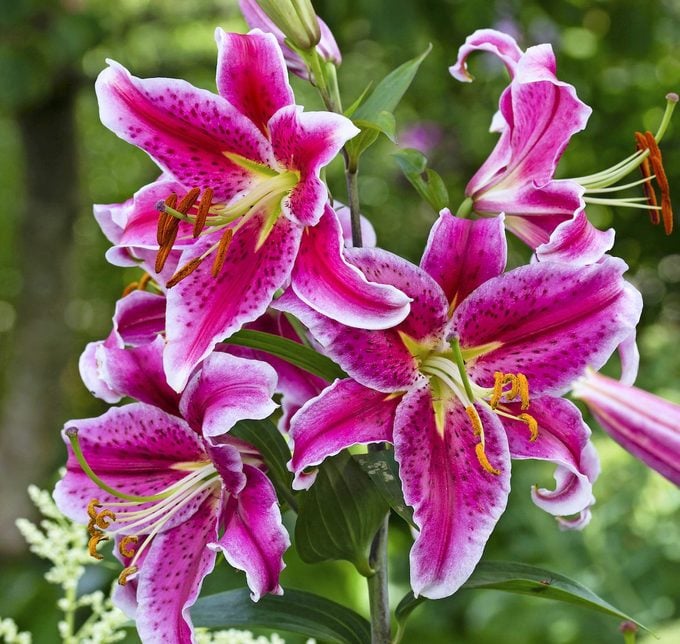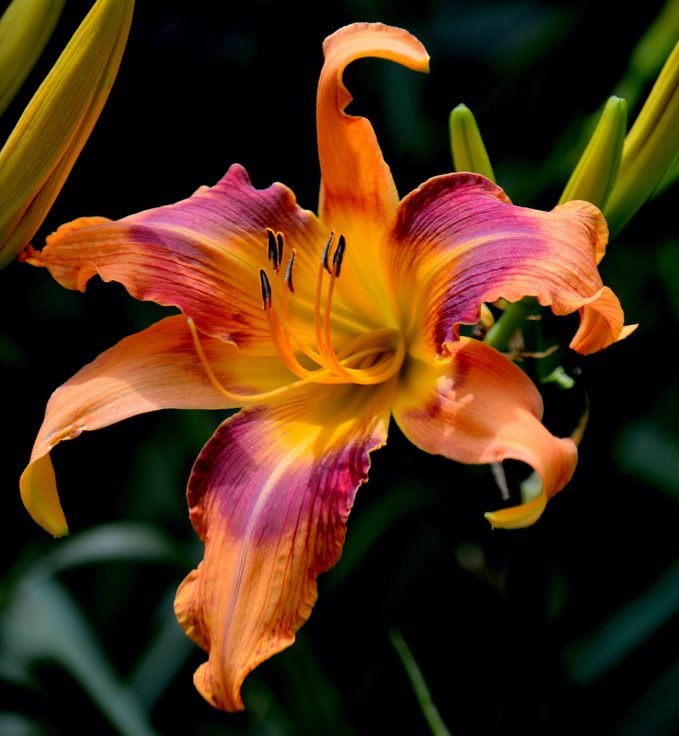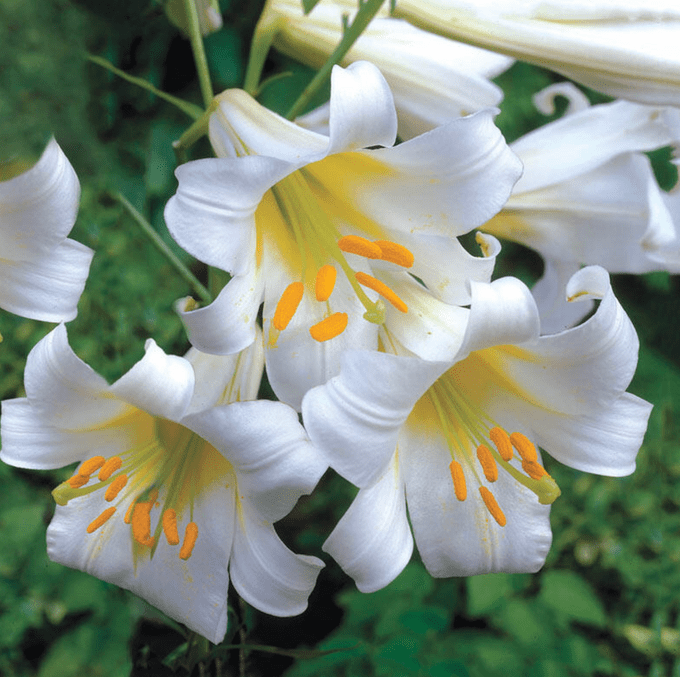True Lily vs Daylily: What’s the Difference?
Updated: Jul. 25, 2023
A daylily and a true lily aren't the same flower. Discover the differences between the two plants, and why you should add them to your garden.
Common Lily Confusion: True Lily vs Daylily

What’s in a name? When it comes to daylilies and true lilies, much more than meets the eye. You might assume they’re part of the same botanical family—their names both read “lily,” after all—but surprisingly, that’s not true. Here’s how you can tell the difference between these similar looking flowering plants.
See the top 10 beautiful lily flowers to love.
True Lily

A true lily—botanic name lilium—boasts short, narrow leaves that radiate from the plant’s main stem. Its six-petaled blooms last a long time, and they make excellent cut flowers. When true lilies grow, their stiff stems grow from white or yellow scaly bulbs. They usually grow 1 to 6 feet in height.
Lily bulbs should be planted in the fall so that the flowers bloom the following summer. When choosing a lily for your garden, be mindful of the plant’s specific bloom time; not all lilies offer flowers at the same time of the season. Lily bulbs are fragile, so it’s best to handle them with care when planting and to get them in the ground as soon as possible after purchasing. They grow best in full sun, but will tolerate part sun. In hotter climates, some afternoon shade is preferred.
Types of true lilies to look for include Asiatic lilies, Oriental lilies and trumpet lilies, plus hybrids such as Orienpet lilies.
Daylily

Daylilies—botanic name Hemerocallis—feature tall, thin leaves that are often folded—the leaves often resemble ornamental grass. They’re prolific bloomers, capable of growing more than 200 blooms in a season. These blooms last only one day. When daylilies grow, clumps of stems emerge from the base of the plant. In total, they’re typically around 1 to 4 feet in height.
These hearty plants are known for their survival abilities. They don’t require an abundance of care, usually returning year after year. Full sun is best for growing daylilies, and for best flowering, they require six hours of direct sun.
Psst—you need to see these stunning pictures of lilies.
Benefits of Both True Lilies and Daylilies

Although they’re not the same plant, daylilies and true lilies do offer some of the same backyard benefits. They both come in a rainbow of colors and can easily be divided and replanted to fill out your garden. Best of all, both require very little maintenance once established.
Next, learn how to grow native trout lily for early spring color in shade.




















